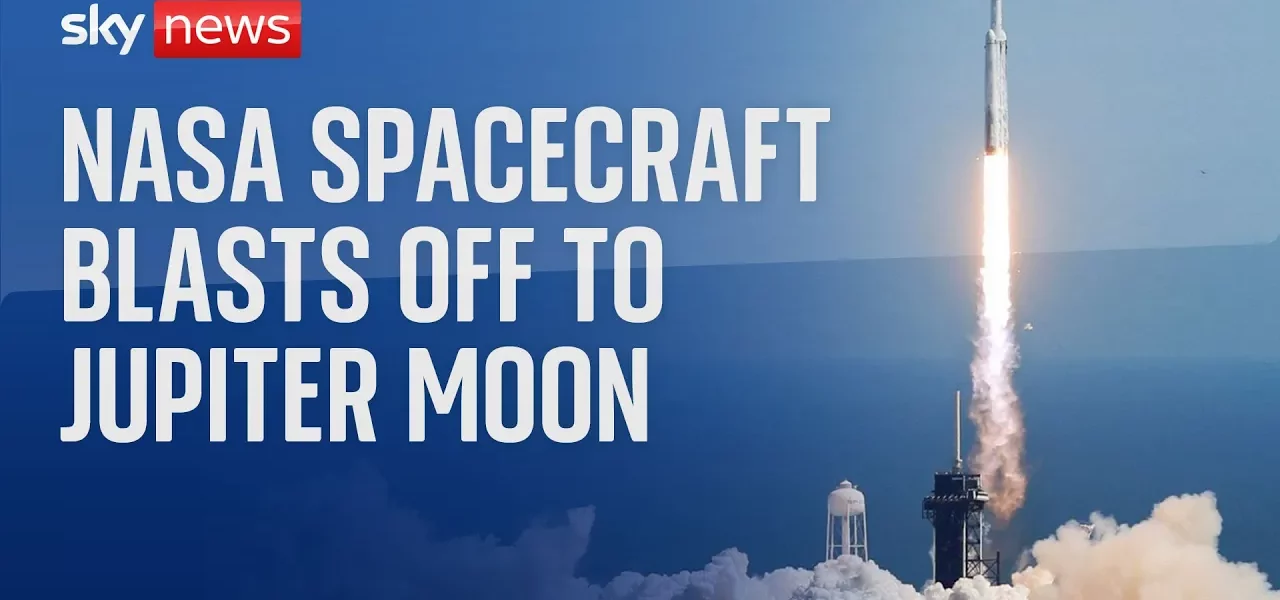Falcon Heavy Launch with Europa Clipper: Unveiling the Mysteries of Europa

The Falcon Heavy rocket’s launch with the Europa Clipper marks a significant milestone in space exploration, aimed at revealing the secrets of Jupiter’s moon, Europa. This article delves into the intricate details of the launch, the mission objectives, and the scientific significance of exploring the vast ocean hidden beneath Europa’s icy surface.
Introduction to the Falcon Heavy Launch
The recent liftoff of the Falcon Heavy rocket, powered by 27 Merlin engines, represents a remarkable achievement in modern space travel. With an impressive thrust of 5.1 million pounds, this launch is not just about sending a payload into space; it is about paving the way for groundbreaking scientific discoveries. The Europa Clipper mission aims to explore the enigmatic ocean beneath Europa’s crust, a significant focus for scientists searching for extraterrestrial life.
The Launch Sequence
Countdown to Liftoff
The launch sequence commenced with a precise countdown, culminating in a powerful ignition that propelled the Falcon Heavy into the sky. The rocket’s engines operated at nominal chamber pressures, ensuring stability and power during the initial phase of the flight.
Engine Performance and Rocket Dynamics
As the rocket ascended, it rolled to adjust its trajectory, showcasing the incredible engineering behind its design. After reaching a designated altitude, the engines were throttled back, transitioning into maximum power mode, a critical stage for ensuring the rocket could withstand the stresses of space travel.
Separation of Boosters
One of the most thrilling moments during the launch was the separation of the rocket’s boosters. These boosters, which have been reused from previous missions, are designed to provide additional thrust during the initial ascent. Their potential for reuse underscores SpaceX’s commitment to sustainable and cost-effective space exploration.
Understanding Europa Clipper’s Mission
The Objectives of the Mission
The Europa Clipper mission is set to embark on a six-year journey to Jupiter’s moon Europa, which scientists believe harbors a vast ocean beneath its icy surface. The primary objectives of the mission include:
- Investigating the ice shell and the ocean beneath.
- Studying the moon’s geology and surface composition.
- Assessing the potential habitability of the ocean.
- Searching for signs of life or the chemical building blocks necessary for life.
The Journey to Europa
The journey to Europa is not a straight path. To maximize the payload capacity for scientific instruments, the mission will utilize gravitational assists from other celestial bodies. This intricate maneuvering allows the spacecraft to conserve fuel while carrying a rich suite of scientific equipment, ensuring a thorough investigation upon arrival.
The Importance of the Mission
Scientific Significance
The Europa Clipper mission is crucial for several reasons:
- Exploration of Potential Life: Europa is one of the most promising places in our solar system to search for extraterrestrial life due to its subsurface ocean.
- Understanding Jupiter’s System: Studying Europa will provide insights into the dynamics of Jupiter’s moons and their interaction with the planet.
- Advancements in Space Technology: The mission will showcase advancements in spacecraft design and launch technologies, paving the way for future missions.
Conclusion
The Falcon Heavy launch carrying the Europa Clipper is a monumental step in our quest to understand the universe and the possibility of life beyond Earth. As we anticipate the spacecraft’s arrival at Europa in six years, we are reminded of the dedication and passion of the scientists who have invested their careers into this mission. Stay tuned for further updates as we continue to follow the journey of the Europa Clipper and the discoveries it will unveil. For more information on space exploration, check out our related articles on the latest missions and technological advancements.
“`




